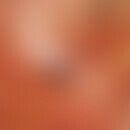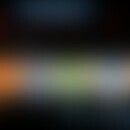Synonym(s)
DefinitionThis section has been translated automatically.
Optical brighteners (there are currently about 400 different substances with different chemical structures), also called whiteners or whitening agents, are organic dyes that convert non-visible, absorbed UV radiation into visible blue light. This photodynamic effect is suitable for optically compensating a yellowish colour based on residual substances. For example, optical brighteners make white laundry appear in a lighter "white".
Optical brighteners are found in detergents, textiles, papers and plastics. White papers and white textiles appear purer white due to this purely optical effect. As the brighteners are not firmly integrated into the textile fibres, they can get on the skin with sweat. If they are exposed to sunlight at the same time, they can cause photo-allergenic or phototoxic reactions.
Remark: Optical brighteners are hardly biodegradable and therefore accumulate in the sludge of waste water.
ClassificationThis section has been translated automatically.
As early as the 19th century there were reports of the fluorescence of aesculin, or sunlight-irradiated, aqueous extracts of horse chestnut bark. The 4-methylumbelliferone derived from aesculin was the first industrially produced optical brightener. However, these initially used substances were not very light-, water- and wash-fast. The first optical brighteners that adhered well to the fiber were the derivatives of 4,4′-diamino-2,2′-stilbenedisulfonic acid (see stilbenes below).
The currently used optical brighteners can be classified as follows:
- Stilbene compounds like blankophores (about 80 % of all produced optical brighteners, suitable for cellulose and polyamides)
- Ethylene, phenylethylene and thiophene derivatives containing two hetero-aromatic radicals (e.g. the benzoxazole radical)
- Coumarin and carbostyril derivatives (have only historical significance)
- 1,3-Diphenyl-2-pyrazoline (for optical brightening of protein fibres, cellulose acetate and polyamides)
- Naphthalimides (most important representative N-methyl-4-methoxy-naphthalimide, very stable)
- Aromatic compounds such as thiazoles, pyrazoles, oxadiazoles or triazines (for example 2,4-dimethoxy-6-(1'-pyrenyl)-1,3,5-triazine)
You might also be interested in
General informationThis section has been translated automatically.
Fluorescence phenomena are the cause of the "white effect" of optical brighteners. The substracts are able to absorb wavelengths from the ultraviolet range of sunlight (at 290-400 nm), which is not visible to the human eye, and to re-emit most of the absorbed energy in the now visible light blue light. By emitting blue light, the colour saturation rises above 100%. This optical colour effect makes the base material appear lighter (whiter than white). In addition, the additive addition of blue light leads to a superimposition of yellow tones.
Note(s)This section has been translated automatically.
Detergents: In the detergent sector, optical brighteners are primarily intended for washing light-coloured textiles with heavy-duty detergents. The function of detergent brighteners is to replace brighteners that are washed out or photochemically degraded during wear. In this way, increasing yellowing and fading of the textiles is prevented, thus increasing their useful life. The content of optical brighteners in detergents ranges from 0,03 % to 0,3 % (dry matter) with an average value of 0,15 %.
Textiles: Today's detergents contain almost exclusively the two stilbene derivatives DAS1 (disodium 4,4-bis[(4-anilino-6-morpholino-1,3,5-triazin-2-yl)amino]-stilbene-2,2-disulfonate) and DSBP (disodium 4,4-bis(2-sulfostyryl)-biphenyl). DAS1 and DSBP are sodium salts of aromatic (in the case of DAS1 additionally heterocyclic) sulfonic acids. The sulfonate groups are responsible for the moderate water solubility of the otherwise hydrophobic brighteners.
Paper: Optical brighteners are formulated during the production of some paper grades. Papers are thus "bright" white. They are used for magazine papers and poster papers to achieve a better brightness. White pigment for paper is titanium dioxide. Titanium dioxide increases the degree of whiteness, and fluorescent organic substances are added for optical brightening. Today, finely ground and highly white or precipitated calcium carbonate is often used as a substitute for titanium dioxide.
Fluorescent inks: By adding certain optical brighteners, non-fluorescent colorants can be turned into chromatic inks with fluorescent character. Due to the special absorption and emission maxima, however, this composition is only suitable for blue to blue-green tones. This application plays a certain role separately for signal colours.
Medical use: optical brighteners are used in the diagnosis (vital microscopy) and therapy of mycoses. For example, microscopic potassium hydroxide eye diagnostics of mycoses is much more successful by using fluorescence microscopic methods with optical brighteners from the group of diaminostilbenes (calcofluor white).
Environmental relevance: During the washing process the optical brighteners couple to the fabric fibre. A part remains in the washing solution and thus gets into the waste water and further into the sludge via sewage treatment plants. Due to the resistance of the brighteners to microbial degradation in soil and water, they can accumulate there. In water bodies and on the soil surface, slow degradation by photolysis occurs in sunlight.
Note: For certain classes of substances (e.g. stilbene derivatives) oestrogen-like effects are suspected.
LiteratureThis section has been translated automatically.
- Mayser PA (2014) Majocchi granuloma. Advantages of optical brightener staining in a case report. Dermatologist 65:721-724.
- Sadeghi G et al (2009) Fungistatic effects of optical brightener 220 against Trichophyton tonsurans, Aspergillus fumigatus and Candida albicans. J Dermatologist Treat 20:120-123.
- Rüchel R et al(2000) Vital staining of fungal elements in deep-seated mycotic lesions during experimental murine mycoses using the parenterally applied optical brightener Blankophor. Med Mycol 38:231-237.
- Zhu R et al (2007) Optical brightener M2R destroys the peritrophic membrane of Spodoptera exigua (Lepidoptera: Noctuidae) larvae. Plague Manag Sci 63:296-300.




